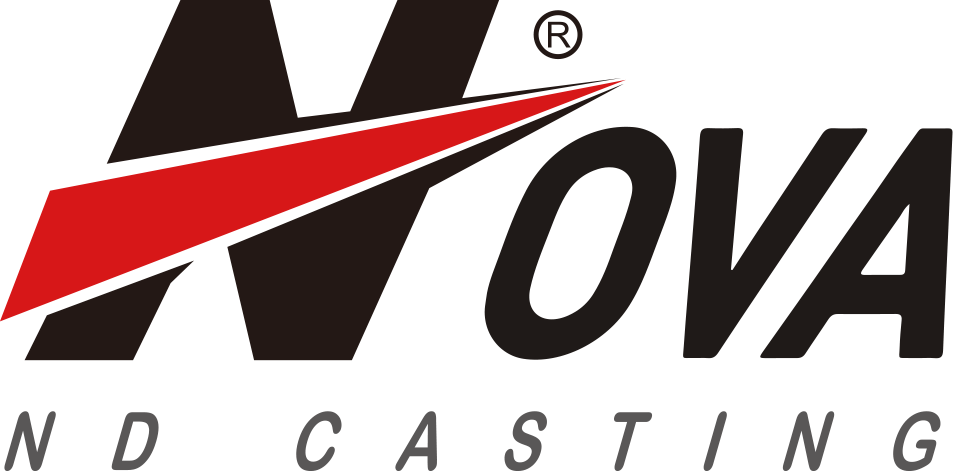Tecnología Avanzada en Componentes de Maquinaria Agrícola
Los componentes modernos de maquinaria agrícola se han convertido en instrumentos de precisión gracias a sistemas avanzados de automatización y guiado. Estos avances abordan problemas críticos como la escasez de mano de obra y las ineficiencias operativas, al tiempo que promueven prácticas agrícolas sostenibles.
Integración de Kits Hidráulicos de Dirección Automática para Agricultura de Precisión
Los sistemas hidráulicos de dirección automática reducen los errores de superposición a unos 2 centímetros o menos, lo que significa que los agricultores pueden trabajar aproximadamente un 15 a 20 por ciento más de tierra cada día con su equipo existente. La investigación indica que estos sistemas ahorran aproximadamente 6 litros de combustible por hectárea cuando las trayectorias se planifican eficientemente. Lo que hace tan valiosa esta tecnología es su capacidad de adaptarse automáticamente a las condiciones cambiantes del terreno, manteniendo la precisión de la dirección dentro de aproximadamente un grado, incluso en terrenos irregulares o inclinados donde los métodos tradicionales tendrían dificultades.
sistemas de Guiado y Control 3D para una Funcionalidad Mejorada del Equipo
Los sistemas de control multieje procesan datos topográficos en tiempo real a 50 Hz, permitiendo ajustes autónomos para:
- Optimización de la profundidad del implemento (precisión en la colocación de semillas: ±0,8 cm)
- Equilibrio de la fuerza de tracción a través de los barras porta-herramientas
- Respuesta instantánea a las variaciones de densidad del suelo
Este enfoque de fusión multisensor reduce el estrés en los componentes en un 37 % en comparación con la operación manual, según se verificó en ensayos de campo realizados en 2024 en 12 000 hectáreas.
Sistemas de Navegación GNSS y GPS: Maximizando la Precisión en la Agricultura Inteligente
Las redes RTK-GNSS ofrecen una precisión posicional de 1 cm mediante servicios regionales de corrección, permitiendo:
- Repetibilidad inferior a una pulgada para siembra sin labranza
- Mapeo automático de cobertura con márgenes de error <0.5%
- Alertas de mantenimiento predictivo basadas en patrones de uso
Una encuesta de agritech de 2023 reveló que el 89 % de los agricultores que utilizan componentes con GPS recuperaron su inversión en un plazo de 18 meses gracias a mayores rendimientos y menores costos de insumos.
Amplia Gama de Productos y Compatibilidad de Equipos
Las operaciones agrícolas modernas requieren componentes de maquinaria agrícola que se adapten a diversas tareas y que sigan siendo compatibles entre diferentes generaciones de equipos. Nuestro catálogo satisface esta demanda a través de dos ventajas estratégicas.
Amplia Selección de Tractores y Implementos con Componentes Innovadores
Ofrecemos más de 140 configuraciones de tractores con potencias que van desde 50 hasta 400 HP, combinadas con implementos para labranza, siembra y manejo de cultivos. Las innovaciones clave incluyen:
- Sistemas modulares de acoplamiento rápido que permiten cambios de accesorios en menos de 15 segundos
- Interfaces universales de toma de fuerza (PTO) compatibles con implementos antiguos y modernos
- Reconocimiento inteligente de accesorios que configura automáticamente las presiones hidráulicas y los límites de RPM
Esta flexibilidad permite a los agricultores escalar sus operaciones sin tener que reemplazar flotas completas, algo esencial dado que el 68 % de las explotaciones agrícolas utilizan equipos fabricados en 2 a 4 décadas diferentes (AgriTech Trends 2023).
Integración perfecta en los componentes existentes de maquinaria agrícola
Nuestros componentes utilizan patrones de montaje según norma ISO y conectores hidráulicos compatibles con SAE, logrando una interoperabilidad del 98 % con equipos fabricados después de 1995. Las pruebas de campo demuestran mejoras significativas:
| Métrica de integración | Promedio de la Industria | Nuestra solución |
|---|---|---|
| Tiempo de instalación para retrofit | 8–12 horas | ≈3 horas |
| Compatibilidad de sensores multi-marca | 47% | 89% |
Esta compatibilidad reduce los costos de retrofit en un 60 % en comparación con sistemas propietarios, preservando la inversión en maquinaria existente.
Costo total de propiedad optimizado y retorno sobre la inversión a largo plazo
Componentes duraderos para maquinaria agrícola que reducen costos a largo plazo
Los cilindros hidráulicos reforzados y las cajas de engranajes resistentes a la corrosión prolongan la vida útil del equipo entre un 40 % y un 60 % en comparación con piezas estándar (Informe AgriTech Machinery 2023). Al utilizar componentes diseñados para más de 10.000 horas de funcionamiento, los agricultores reducen los costos anuales de reparación entre 18 y 24 dólares por acre, lo cual es especialmente significativo para implementos de alto uso como sembradoras y herramientas de labranza.
Cálculo del ROI en condiciones reales basado en datos de rendimiento
Un estudio de cinco años realizado en 82 operaciones de agricultura inteligente reveló que la maquinaria equipada con sensores de auto-calibración y componentes habilitados para IoT generó un retorno de 6,20 dólares por cada dólar invertido, impulsado por:
- 28 % menos eventos de paradas no planificadas
- 19 % menos de consumo de combustible mediante una transferencia de potencia optimizada
- 12 % más de rendimiento gracias a la sincronización precisa de componentes
Equilibrar la alta inversión inicial con los ahorros a largo plazo de la agricultura inteligente
Aunque los componentes avanzados de guiado tienen un costo inicial entre un 25 % y un 35 % mayor, el punto de equilibrio promedio se alcanza en 3,7 años debido a eficiencias operativas sostenidas:
| Factor de Costo | Componentes tradicionales | Componentes Avanzados |
|---|---|---|
| Mantenimiento Anual | $4,200 | $1,800 |
| Ciclo de reemplazo | 5 Años | 8 años |
| Desperdicio operativo | 9% | 3% |
El análisis del sector confirma una reducción del 34 % en los costos totales de propiedad durante cinco años al utilizar componentes integrados de agricultura inteligente, reforzando su valor estratégico en la agricultura moderna.
Confiabilidad, soporte y mantenibilidad comprobadas
Componentes probados en campo respaldados por testimonios de agricultores y reputación de marca
Los componentes de equipos agrícolas son sometidos a exigentes condiciones climáticas y diferentes tipos de suciedad, y según encuestas recientes, aproximadamente 89 de cada 100 agricultores no han tenido averías importantes durante las últimas tres temporadas de cultivo. Los fabricantes de equipos han estado utilizando años de datos de campo para mejorar elementos como sellos hidráulicos, los rodamientos metálicos dentro de la maquinaria y las conexiones eléctricas que mantienen todo funcionando sin problemas. Estas mejoras realmente resisten más de 2.500 horas cada año cuando se utilizan en máquinas agrícolas grandes como cosechadoras y arados. Pruebas independientes también muestran que estas piezas especiales del tren motriz permanecen alineadas con una precisión de fracciones de milímetro, lo cual es muy importante al trabajar con suelos arcillosos duros que realmente pueden desgastar los componentes estándar con el tiempo.
Diseño de Fácil Mantenimiento y Disponibilidad de Piezas de Repuesto Minimizan el Tiempo de Inactividad
Los paneles de acceso sin herramientas y las líneas hidráulicas codificadas por colores reducen los tiempos de servicio en un 40 % en comparación con los sistemas antiguos. Una red logística centralizada garantiza la disponibilidad del 98 % de repuestos críticos para la misión, tales como:
- Módulos de antena GPS
- Conjuntos de válvulas compensadas por presión
- Matrices de sensores habilitadas para bus CAN
Los centros regionales de distribución envían la mayoría de las piezas en menos de 24 horas, ayudando a las granjas a mantener una disponibilidad del equipo del 93 % durante las temporadas pico. Combinado con diseños modulares, esta infraestructura de soporte reduce los costos anuales de mantenimiento en 18 dólares por acre para tractores de alta potencia (referencia de eficiencia agromecánica 2023).
Preguntas frecuentes
¿Qué son los kits hidráulicos de dirección automática?
Los kits hidráulicos de dirección automática son sistemas diseñados para mejorar la precisión en las operaciones agrícolas al minimizar errores de solapamiento y adaptarse automáticamente a las condiciones cambiantes del terreno.
¿Cómo benefician los sistemas GNSS y GPS a la agricultura inteligente?
Los sistemas GNSS y GPS proporcionan una alta precisión en el posicionamiento, lo que permite a los agricultores lograr una repetibilidad de subpulgadas, un mapeo de cobertura automatizado y un mantenimiento predictivo, mejorando en última instancia el rendimiento y reduciendo los costos.
¿Por qué es crucial la compatibilidad del equipo en la agricultura moderna?
La compatibilidad del equipo garantiza que diferentes generaciones de maquinaria puedan funcionar juntas de manera fluida, permitiendo a los agricultores expandir sus operaciones sin necesidad de reemplazar toda la flota.


